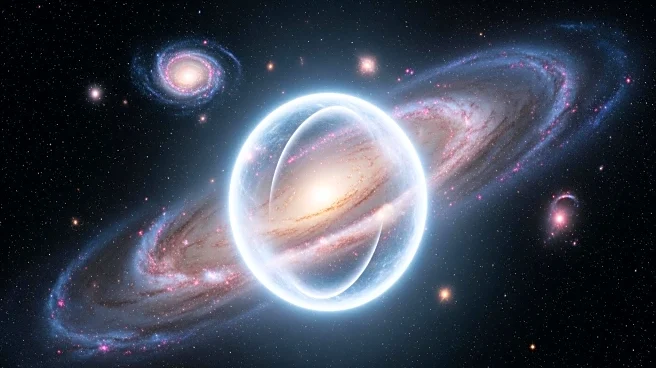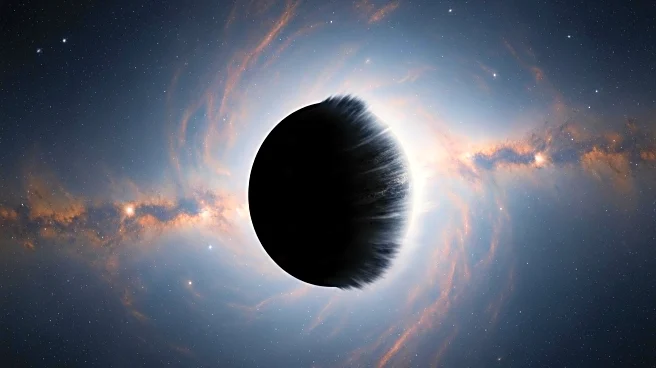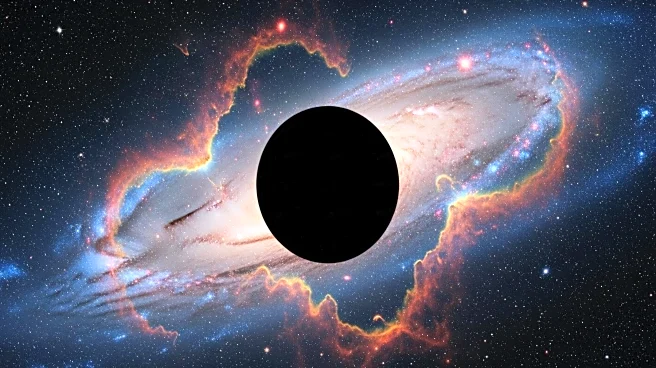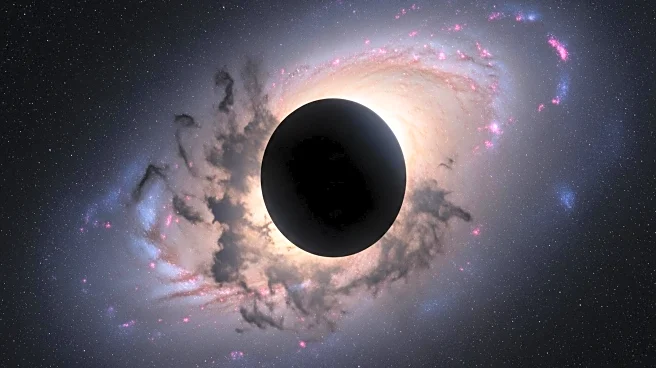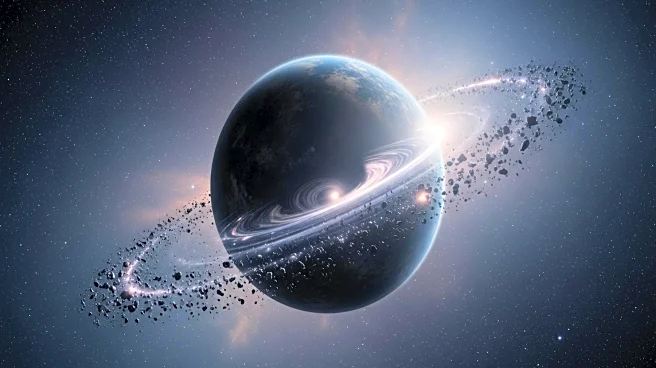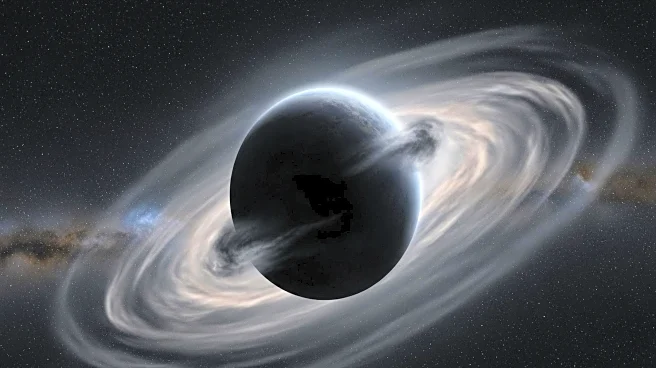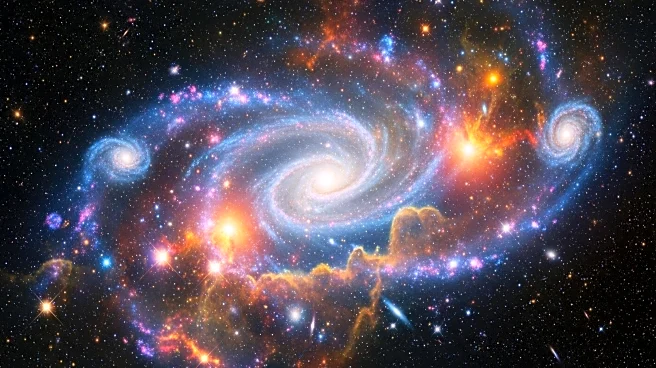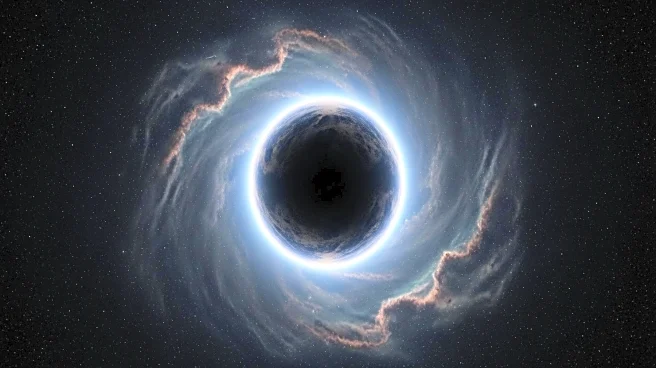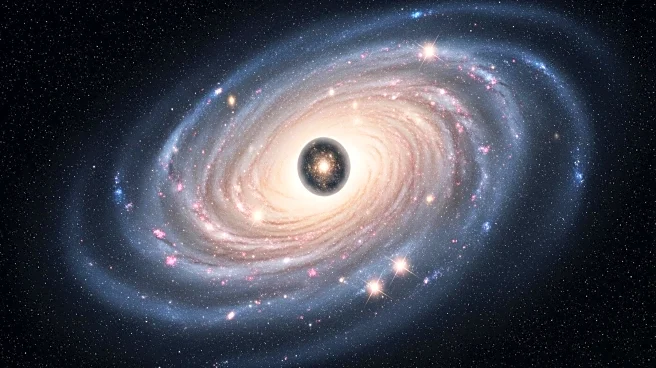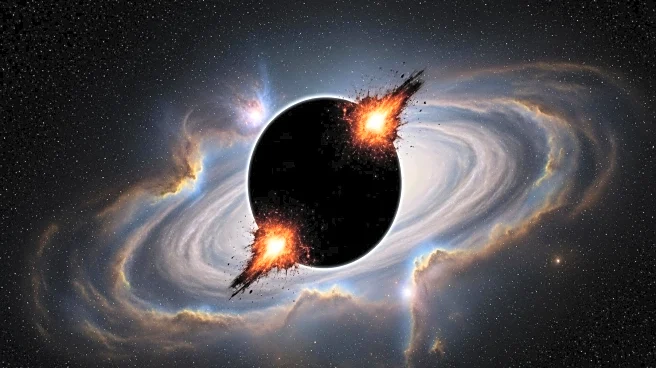What's Happening?
Astronomers have observed a rogue planet, Cha 1107-7626, growing at an unprecedented rate, gathering cosmic gas and dust at six billion tonnes per second. Located 620 lightyears away in the constellation Chamaeleon, the planet has a mass five to ten times that of Jupiter. The growth rate is the fastest ever recorded for a planet, challenging existing theories about planetary formation. The findings suggest that rogue planets may form similarly to stars, with accretion bursts driving their growth.
Why It's Important?
The discovery of Cha 1107-7626 blurs the line between stars and planets, offering new insights into planetary formation. Understanding rogue planets and their growth mechanisms could reshape theories about the origins of celestial bodies. The study highlights the role of magnetic activity in driving accretion, suggesting that even low-mass objects can have strong magnetic fields. This research contributes to the broader understanding of planetary dynamics and the diversity of celestial objects in the universe.
What's Next?
Further research will focus on the mechanisms driving the rapid growth of Cha 1107-7626, exploring the role of magnetic fields and accretion bursts. Scientists will continue to monitor the planet's behavior, gathering data to refine models of planetary formation. The study may lead to new discoveries about rogue planets and their characteristics, enhancing our understanding of the cosmos. As research progresses, astronomers will seek to identify other rogue planets and compare their growth patterns.
Beyond the Headlines
The discovery challenges traditional views of planetary formation, suggesting that rogue planets may share characteristics with stars. It underscores the complexity of celestial dynamics and the need for interdisciplinary research to unravel the mysteries of the universe. The findings highlight the importance of advanced telescopes and international collaboration in pushing the boundaries of astronomical research.

